The Giant Worms of Japan
Posted by: mystery_man on October 12th, 2012
There aren’t too many creatures that give people the willies more than worms do. Charles Darwin called these organisms the “ploughs of the earth,” and at any given time there are up to over a million earthworms in a single acre of land. These slimy, wriggling staples of fishermen everywhere inspire revulsion and loathing to many, and although they are crucial to our ecology, they have mostly remained hated and underappreciated.
The image that many have of worms is of a small creature, maybe as long as one’s finger or hand, and for some this is quite big enough. Yet can you imagine a worm as long as your arm? How about one as long as your leg? Even longer still? That’s a mighty big fishhook.
In Japan, the longest known species of worm is known as the Seibold earthworm (Pheretima sieboldi), which reaches typical lengths of around 25 ~ 28 cm (9.8 ~ 11 inches), although specimens of around 40cm (about 16 inches) long or over have also reportedly been found on occasion. Some areas in Nara prefecture, as well as the southern Ryukyu islands have reliably documented worms from 40 to 50 cm (16 ~ 19.6 inches) long. These are big worms to be sure, but are there even more massive worms lurking in the earth in Japan?

There have long been tales of enormous earthworms surfacing from time to time in various areas of Japan. One of the hotspots for such accounts is Hyogo prefecture, on Honshu Island, which has many historical accounts of worms in excess of 1.5 meters (5 feet) long. One such account dates from the year 1712, in what was then known as Tamba province (now part of Hyogo prefecture).
The account describes a huge landslide that occurred in a village, after which 2 giant earthworms were found in the debris. One of these worms measured 1.5 meters (5 feet) in length, while the other was larger still, at 3 meters (10 feet) long. Another landslide that occurred in the same general vicinity allegedly unearthed a 4.5 meter (15 feet) long worm.
A more modern report from Mikata-gun, which is located in the mountains of Hyogo prefecture, dates from 1996 when a farmer uncovered an earthworm 1 meter (3.3 feet) long and 2cm (0.8 inches) thick while planting a tree on his rural property. It was the first time the surprised farmer had ever encountered such a large worm in all his years in the area.
Giant worms have been reported from other parts of Japan as well. In Okayama prefecture, one woman claimed to have seen a worm 3 meters (10 feet) long in a field that was being tilled. The worm had apparently been disturbed by the farming activity. Another farmer in the same prefecture brought up a still thrashing piece of a worm that had been hacked off during farm work. The piece is estimated to have come from a worm 3.5 to 4 meters (11.5 to 13 feet) long. The rest of the worm could not be located.
Slightly smaller worms measuring between 60cm (2 feet) to 1 meter (3.3 feet) have been reported from Okayama prefecture, Shikoku Island, the Izu peninsula, the Kii peninsula, and Nara prefecture as well.
Perhaps the strangest report comes from Fukuoka prefecture, on the island of Kyushu. In 1997, a Mr. Ou Sato and his friend spotted something odd near the side of a river that they at first took to be a hock of ham someone had discarded. Thinking this to be a bit odd, the two approached to get a better look. On closer inspection, they found the mysterious object to be a tubular piece of flesh, 30 cm (1 foot) long and 20 cm (8 inches) in diameter, with thin, glistening wet skin. There were clear grooves encircling it like those of an earthworm’s segments, and the color was described as brown like “a bursting sausage.” There was no evidence of the object possessing bones of any kind.
Both ends of the curious piece were ragged and torn, leading the two men to estimate that it was obviously a piece from the carcass of a much larger animal. The witnesses’ impression was that it originated from a gigantic earthworm, which they estimated the full length as being perhaps 10 meters (33 feet) or more. Unfortunately, due to the slimy and slightly decomposing nature of the find, they left it where it lay.
How feasible is it that worms of these sizes could be living in Japan? Although the lengths we are talking about here may seem to be firmly in the realm of myth and fantasy, the dimensions are actually comparable to a few known species of worm in nature that reach truly enormous proportions. The various species of giant worm have a wide distribution, and are found in far flung places all over the world.
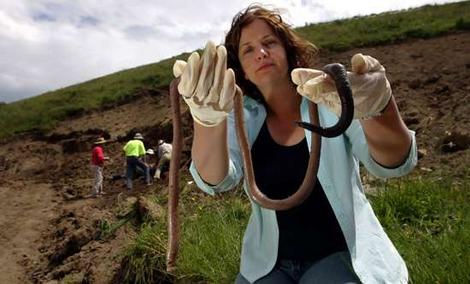
Perhaps the largest overall known species is the giant Gippsland earthworm (Megascolides australis) ~ seen above, which is found only in the Bass River valley of South Gippsland in Victoria, Australia. These huge worms regularly reach sizes of 3 meters (10 feet), and the longest specimen on record was measured at 4 meters (14 feet) long. These rare earthworms are so large that it is possible to hear the gurgling sound of their movement through the earth when they are disturbed.
In neighboring New Zealand, there is another large worm known as the North Auckland worm (Spencerilla gigantean), which reaches a length of 1.4 meters (4.5 feet). These worms have the added surprising, some might even say creepy, feature of glowing in the dark. By some accounts, the light the worms emit is said to be bright enough to read by.
The United States has its own giant worm as well. The Palouse earthworm (Driloleirus americanus) of the northwest can reach lengths of up to 1 meter (around 1.3 feet) long, perhaps even more. These worms have a historic range throughout the Palouse Prairie, which stretches out over southeastern Washington state and northern Idaho, and is sometimes even considered to encompass parts of Oregon and northwestern Montana as well. The Palouse earthworm is a striking white color, and is said to be able to spit defensively at those that provoke it.
Palouse earthwrom
These large worms were thought to be extinct in the late 1980s however in the spring of 2005 a University of Idaho graduate student located a specimen by accident during a dig. Several other specimens or parts of specimens have been reported since.
Europe also has its giant worms. The Black Forest region of Germany is home to a 2 foot long worm known as the Giant Badish earthworm (Lumbricus badensis). Sardinia, Corsica, Italy, Sicily, and southern France are home to a species of the earthworm family Hormogaster that can get as long as 75cm (2.5 feet).
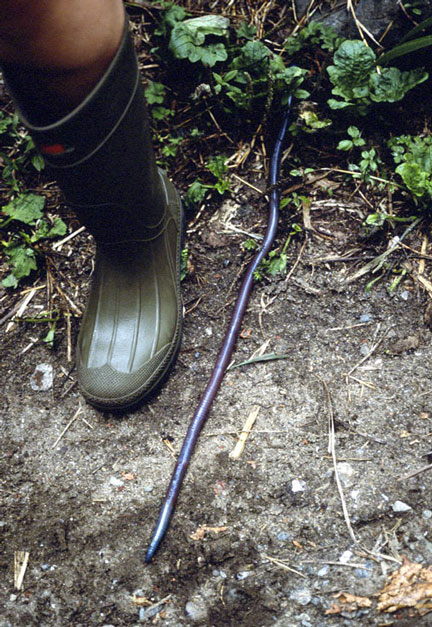
Another of the largest known species is the South African giant worm (Microchaetus rappi) ~ seen above. These worms normally grow to around 1.8 meters (6 feet) in length, but there is evidence that they can get much larger. In 1967, a South African worm was found by the side of a road in William’s Town that measured an incredible 6.7 meters (22 feet) long. This specimen remains the longest earthworm ever confirmed.
Is something like this, or even bigger, living in Japan?
The sizes given in most Japanese giant worm reports are within the realm of possibility considering the known species of giant earthworms found in other parts of the world. There is no real reason in particular to dismiss the possibility of earthworms corresponding to these sizes in Japan. Furthermore, the very nature of the animals could help keep them hidden from human view, which could account for their elusiveness and the rarity of reports. Depending on the species, some earthworms can burrow quite deep underground, and may rarely if ever come to the surface.
Burrow systems as deep as 6 meters or more are not uncommon for some species. This would help to explain how a creature this large could go for some time with little contact with humans, thus remaining unverified. It is interesting to note that several of the Japanese giant earthworm cases were reported in conjunction to some sort of disturbance of the ground, such as a landslide or digging up of the earth. This detail seems consistent with what we could expect of a rarely seen type of earthworm lurking underground in its burrow most of the time.
The Fukuoka giant worm carcass account is a bit more difficult to explain. The estimated length, while far beyond that of any known species of worm, is perhaps plausible for some extremely large unknown species, however the 20cm (8 inch) diameter is another matter. Length is not necessarily a huge burden for an earthworm, but body thickness is. These are burrowing organisms that rely on being able to move as easily as possible through the soil. There are no unnecessary appendages or protuberances on earthworms, and their bodies are geared towards burrowing with as little encumbrance and as much efficiency as possible. For this reason, you will find that even the largest known earthworms are not particularly thick in relation to their considerable body length.
For instance, the giant Australian Gippsland earthworm for all of its size is still only 2cm (0.8 inches) in diameter at its thickest point. Likewise, the giant Palouse earthworm of the United States is typically only a half an inch in diameter. Even in the case of the longest known specimen of earthworm ever recorded, the 22 foot long South African worm mentioned earlier, the diameter was still only around 2 cm. If a worm was any thicker than this, it would find it increasingly more difficult and less energy efficient to burrow through the ground.
Giant Gippsland earthworm
In earthworms, the overwhelming message we get so far concerning their adaptations to a burrowing lifestyle is that length can be extended to an unknown degree, but thickness is limited. So what are we to make of an estimate of a 20 cm (8 inch) diameter in the Fukuoka giant worm account? It just does not seem particularly likely that a burrowing worm would get quite that thick, considering what we see in earthworms that we know of. If the carcass was indeed part of a worm and consistent with the ratio of length to diameter found in known worms, it would have to have been a colossal beast of truly prodigious proportions indeed.
Perhaps it is worth considering that what was seen in Fukuoka was not a worm at all? The site where the remains were found was near a river, close to the water, which leads one to speculate whether some sort of aquatic creature could be the culprit. While there are aquatic freshwater worms, they are typically quite small and nowhere near the sizes being reported here.
It has been speculated that an eel or even a part of a dead Japanese giant salamander could have been the culprit, but it is hard to reconcile those explanations with the descriptions given since it is difficult to imagine what kind of creature would leave a tubular piece with no bones and signs of worm anatomy such as the grooves or segments mentioned.
Giant salamander
Could we be dealing with some type of unknown aquatic invertebrate, perhaps one that made its way up the river from the sea? This may explain the lack of other reports of such thick worms, as well as the death of the animal in question.
Some in Japan have speculated that the carcass could have been part of a caecilian, a type of burrowing, snake-like amphibian.

In his book In Search of Prehistoric Animals, the cryptozoologist Karl Shuker proposed just such a theory when investigating the Minhocão, a giant worm-like cryptid from South America-illustrated above. Shuker proposed that this creature could have been some type of enormous caecilian, These amphibians have limbless, segmented bodies that offer a close match to the appearance of earthworms.
Shuker reasoned that since these creatures are so similar looking and burrow in a manner reminiscent of earthworms, then perhaps a large, undocumented species of caecilian could be behind the reports of the Minhocão. Could the giant worm carcass found in Fukuoka also have been that of some type of giant caecilian?

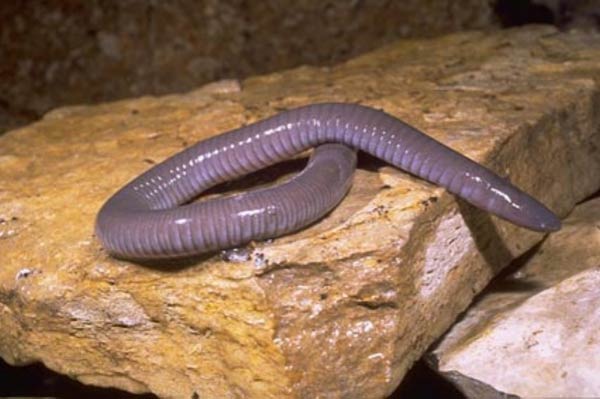
Despite the lack of bones reported, caecilians would certainly account for the general appearance of the Fukuoka carcass. The segments would be perfectly mistakable for those of an earthworm. While caecilians do clearly have heads, since only a portion of the creature’s body was found, it seems reasonable to assume that would not be much of a problem in this case. However, again we are dealing with a burrowing creature unlikely to get too thick. As is the case with earthworms, caecilians do not get very wide in relation to their body length.
Caecilian
An even bigger argument against a caecilian would be that they are not known to live in Japan at all. The closest we get with caecilians in Asia is the family Ichthyophiidae, or Asiatic tailed caecilians native to Southeast Asia. Of these, the most northern ranging species is Ichthyophis sikkimensis of northern India. If a caecilian is behind any of the giant worm reports in Japan, it would be a new creature previously unrepresented in the country, as well as absolutely enormous.
Other possibilities include some sort of giant slug, however the presence of apparent segments seems to be at odds with a slug’s overall smooth skin.
Some sort of gigantic millipede is also perhaps worth considering, however there were no legs reported on the carcass and the size would suggest a millipede unlike anything we now know of, perhaps beyond the physical limits of size for such a creature.
When looking at these giant worm reports, one almost gets the feeling that we may even be looking at two different types of cryptid, giant worms in the case of reports like the Hyogo accounts, and perhaps something else with the Fukuoka carcass. One wonders what we would have discovered if the whole animal had been found in Fukuoka, or if the witnesses had recovered the specimen. As it is, we will likely never know.
Is there an unknown species of giant worm in Japan? There are currently around 6,000 species of earthworm known worldwide, including some of truly enormous proportions. It seems reasonable to think that more will be discovered as we dig and till our way through remote patches of earth. Perhaps Japan is where they next giant species will be uncovered.
In parting, let us consider the possibilities. Humans are exploring the oceans, rainforests, and other frontiers of the world, but what about into the world? What lies in wait for us wrapped deep in its burrow underground? It is clear that for some cryptids one need not look out to the forests, across seas, or up overhead, but rather down at the ground beneath our own feet.
About mystery_man


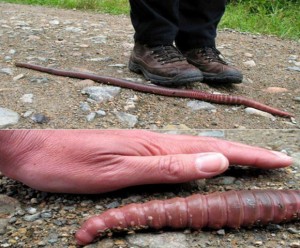
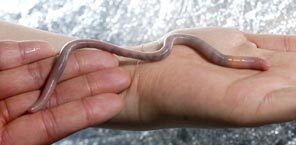

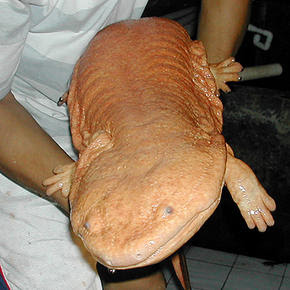
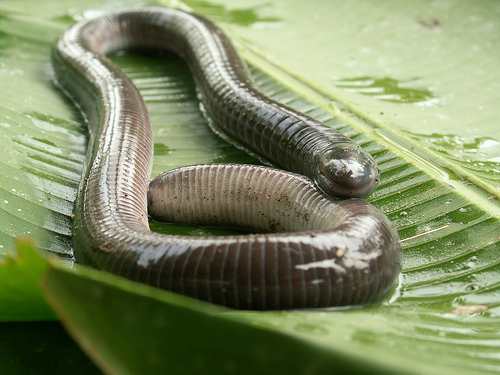
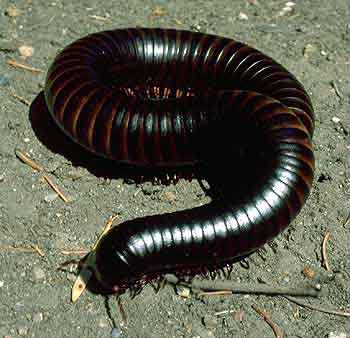








Very nice article, mystery_man. Regarding Minhocão, I can’t really say what it was, but I believe it has been extinct for quite some time now. I like the Glyptodon theory, and in this case it wouldn’t have been a worm, but a mammal… Anyway, sightings were quite common in the highlands of Minas Gerais in the XVII and XVIII Centuries, but for almost 200 years Minhocão has not been reported. The last sighting happenning in the 1840’s. There were a couple of hoaxes after that, but we can’t really count them as sightings, can we?
Re: earthworms, interestingly, according to what I have read in Charles Mann’s “1493” the eastern forests of North America were without the common earthworms we associate with them now prior to the columbian exhange. Where I live now, Alaska, was also without earthworms presumably due to the recent Ice Age, which leads me to wonder how populations of earthworms have distributed themselves over the world particularly during the cold dry conditions that dominated the northern hemisphere during the last few million years. Cheers.
As a fisherman and coming from a fisherman’s perspective, I really enjoyed this post.
I wonder as you do mystery_man, are there bigger worms out there lurking beneath the soil. What about the Mongolian Death Worm?
There are still a lot of mysteries in the world to unravel and this post gets one to thinking.
but then again, what could eat a 30ft worm?